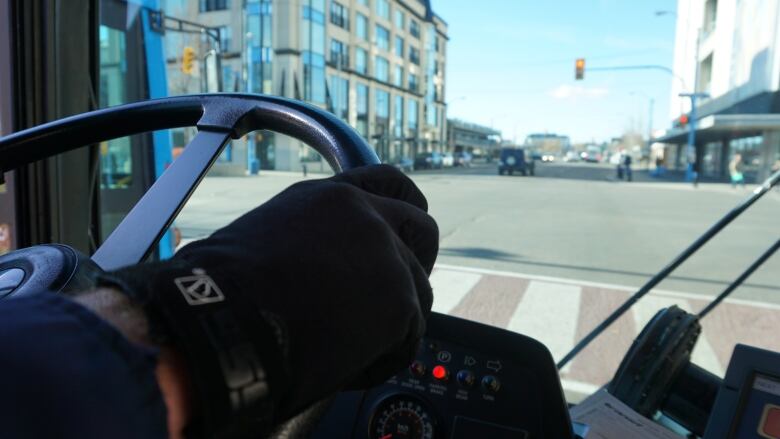Saskatoon has 'transit potential' but culture change needed
Pouring more cars onto longer roadways will never work

It will be one thing to change Saskatoon's transit service, reconfigurethe roadway and implement new technology for a better public transit service but it will be something altogether different to change the public's attitude towards using it.
This is what can be called Saskatoon's "transit potential".
Let's look at two cultures the culture inside city hall and the culture in the community at large. Right now, both are feeding off of each other in terms of transportation.
City hall stuck in 'auto-oriented model'
The community is predominantly driving cars, and this way of moving around has been increasing fordecades.
City Hall has respondedto that growth by adding more roadways primarily designed and dedicated to cars.
Traffic engineers use models for safe and efficient driving. Urban planners use zoning bylaws and ratios for requiring parking.
The more people drive, the practice of using and relying on auto-oriented models becomes more valid.
For example, according to the Transportation Association of Canada's geometric design guide, if a transportation engineer notes that a proposed land use is "x", then the roadway must be "y". Similarly, in urban planning, if the land use is "x", then the amount of parking spaces required must be "y".
Transportation planning is conducted on an analysis of adjacent proposed land uses.
Here's another example.If a developer proposes a new infillsix-storey condominium, the developer is required to spend money on a traffic impact assessment, which is a short-term projection of how many cars will originate from that development to show the impact on the current street system and surrounding neighbourhood from cars.
Right now transit 'not a good choice for many'
Unfortunately, these models and requirements are applied universally throughout the community. It is the universal application of planning models and codes, in particular on infill sites, which perpetuates auto-dependency and fosters congestion.
It is frequently assumed by professionals that if the vast majority of people are driving, then that is their choice.
However, most of these experts don't seem to belooking very hard at whether the city is providing real choices at all. At four per cent ridership, it can be argued that public transit today is not a good choice for many.
What isn't quite so clear is how transportation and development planning will change to factor in the city's new growth plan to 500,000 people and implement the changes necessary to encourage a significant shift in service and attitude towards more public transit use and other modes of travel.
To change the current culture within transportation and urban planning, they must be guided and lead by an attitude of improvement, change, and commitment to a long-range vision and big city goals.
10-minute commute will end without rapid transit
A typical resident is more concerned about getting to work in 10 minutes today than how the city will implement a rapid transit system in 10 years.
However, there are enough leaders in Saskatoon to help people understand that this isn't a matter of choice.
We must move towards a rapid transit system or else no one is going to get to work in 10 minutes, and over-congestion can mean out-migration and stalled growth. Pouring more cars onto longer roadways will never work. Just ask any large city who has tried and are now spending billions on projects to increase transit use and walkability.
So, when the first designs of Saskatoon's new rapid transit system are rolled out, and people are asked for their input, it needs to offer several things.
Council needs to say public transit is 'the new Saskatoon'
First, council needs to resolve (firmly) what the goal of public transit is in the new Saskatoon. Is it to provide coverage (universal service) or frequency (increase ridership)? No city can afford both. We've had a coverage model since the last trolley car stopped operating in the downtown.
Second, the new rapid transit system must link several major destinations on a relatively straight line. The University of Saskatchewan, downtown, major shopping destinations, and areas of high residential density must be served directly, frequently, and rapidly.
Third, how is the city going to treat customers who wait for a bus? How is the environment going to change to be more pleasant for waiting? New transit stations must be safe, attractive, pedestrian and patron friendly.
Fourth, how (or more importantly when) is the transit service going to be separated from cars to allow for rapidtransit? This is where emotion has to be take a back seat to informed decision making.












_(720p).jpg)


 OFFICIAL HD MUSIC VIDEO.jpg)
.jpg)



























































































